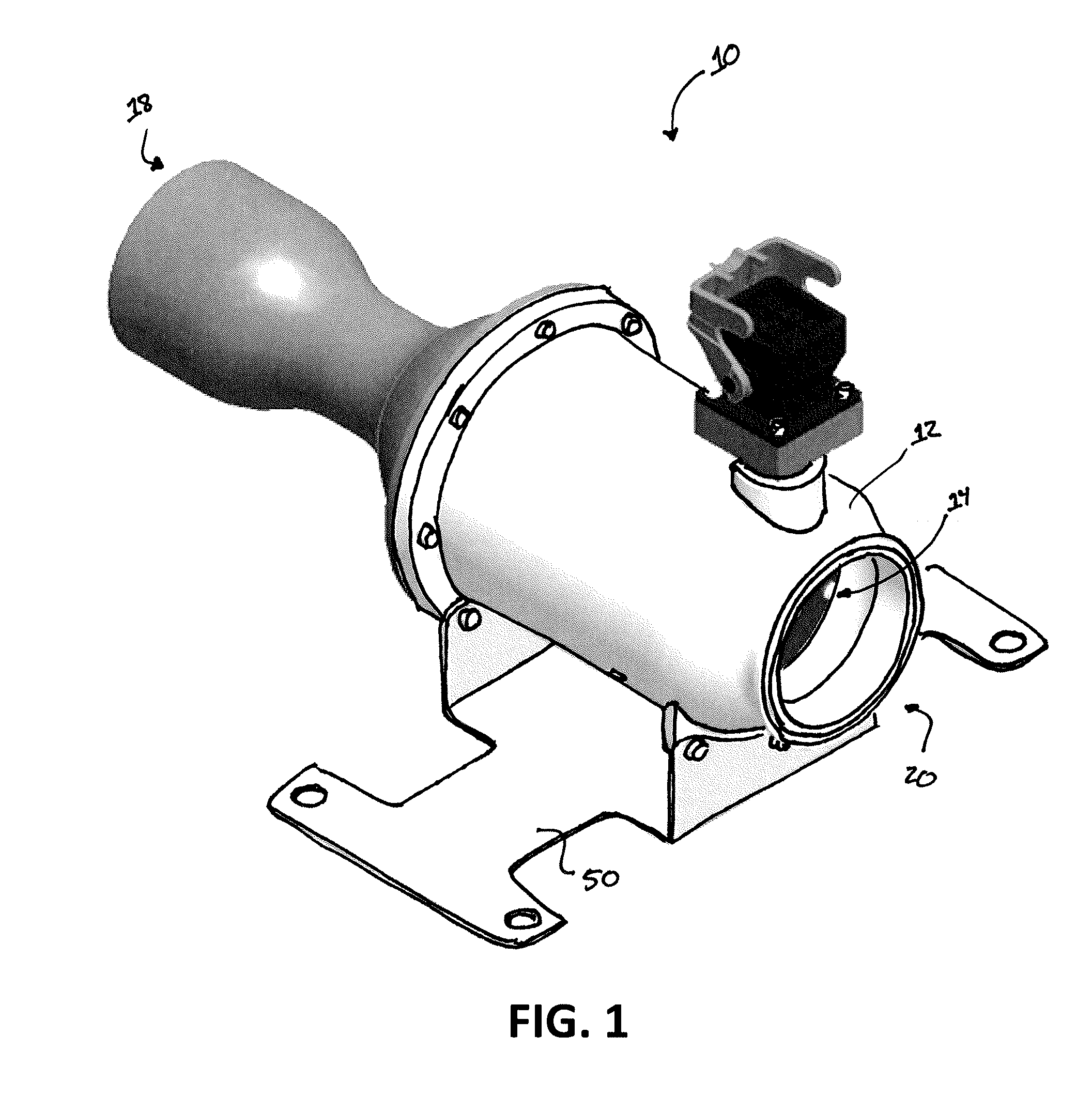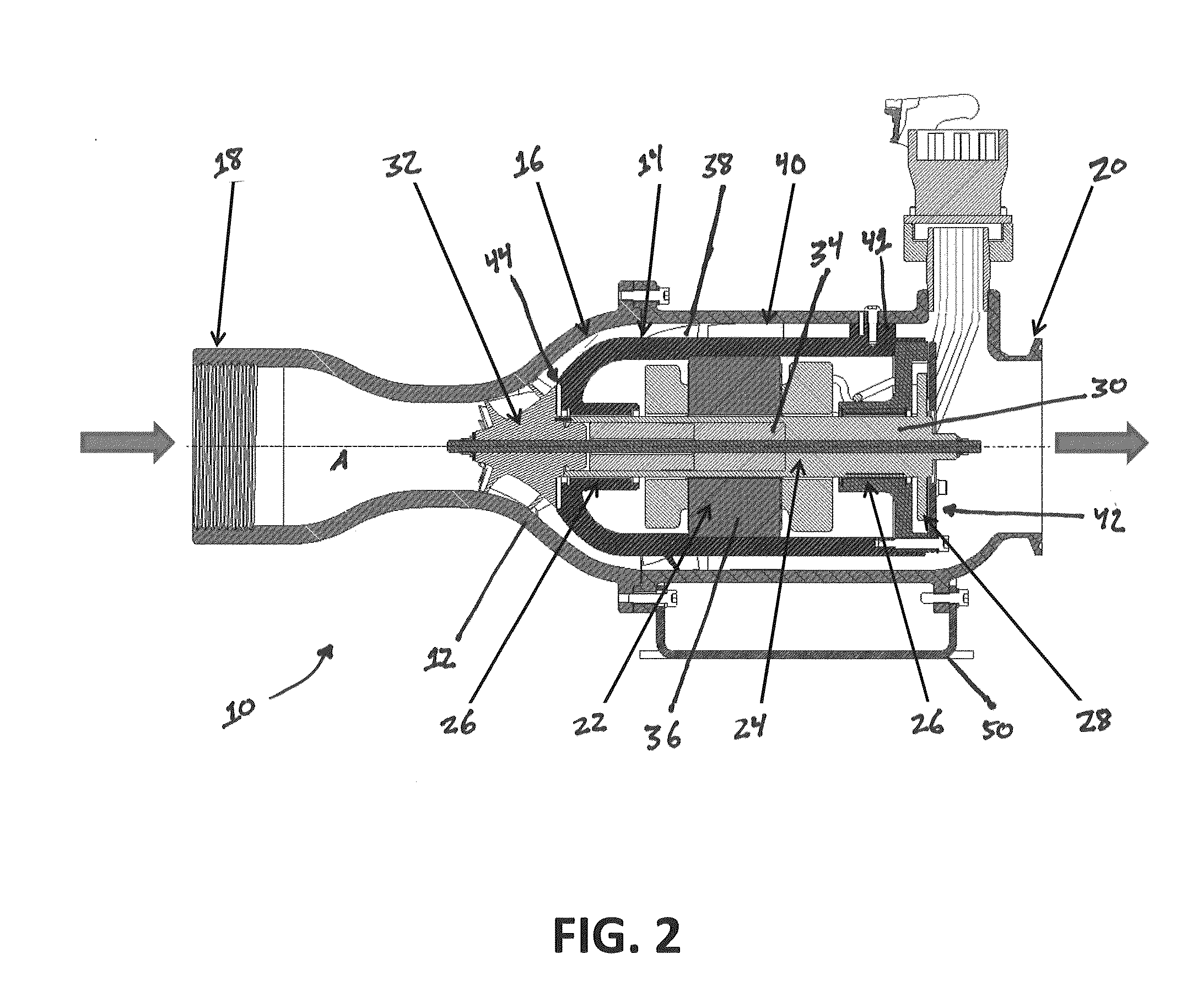Foil bearing supported motor-driven blower
a technology of motor-driven blowers and bearings, which is applied in the field of turbomachinery, can solve the problems of large parasitic load in the system of air blowers, insufficient cooling of the internal components of the machine, and many prior art turbomachines designed to operate at high speeds, so as to reduce the number of parts, save energy, and reduce the effect of operation or efficiency
- Summary
- Abstract
- Description
- Claims
- Application Information
AI Technical Summary
Benefits of technology
Problems solved by technology
Method used
Image
Examples
Embodiment Construction
[0038]The present invention is directed to a motor-driven blower for movement, circulation and compression of gas and air, preferably a dry process gas. More preferably, the present invention is directed to a high-speed, single-stage, motor-driven blower. A perspective view and a cross-sectional view of an exemplary blower in accordance with the present invention, generally designated by reference numeral 10, are illustrated in FIGS. 1 and 2.
[0039]The blower 10 of the present invention is preferably a small, high-efficiency, oil-free device that can be used in various applications, such as for fuel cell air management (both in stationary and mobile designs), and for aeration units, printing systems and air knifes.
[0040]Referring to FIG. 2, a cross-sectional view of a blower 10 in accordance with the present invention showing internal components thereof is provided. As shown, the blower 10 comprises an outer housing 12 and an inner housing 14 disposed therein to define an annular cav...
PUM
 Login to View More
Login to View More Abstract
Description
Claims
Application Information
 Login to View More
Login to View More - R&D
- Intellectual Property
- Life Sciences
- Materials
- Tech Scout
- Unparalleled Data Quality
- Higher Quality Content
- 60% Fewer Hallucinations
Browse by: Latest US Patents, China's latest patents, Technical Efficacy Thesaurus, Application Domain, Technology Topic, Popular Technical Reports.
© 2025 PatSnap. All rights reserved.Legal|Privacy policy|Modern Slavery Act Transparency Statement|Sitemap|About US| Contact US: help@patsnap.com



